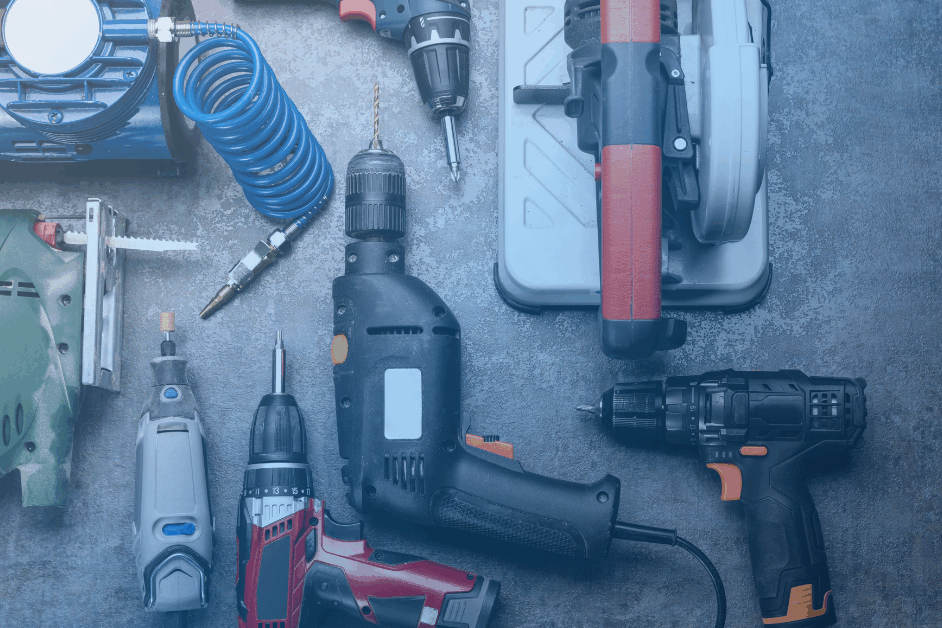From home renovation and everyday projects to commercial construction, power tools make complex tasks easier to manage. According to the North American Precis Syndicate, 55 percent of Americans have at least five power tools in their possession, and 23 percent own double that. Where are people buying those tools and what makes a consumer pick one brand over another? We dug into TraQline’s survey data for a thorough power tool market analysis.
Top Power Tool Retailers So Far in 2021
For the first quarter of 2021, Home Depot led the way as the go-to power tool outlet, holding 26 percent of the market across the country. Lowe’s, however, wasn’t far behind with 19 percent of the US market. Lowe’s was the more prominent retailer in the southern region of the country, while Amazon and Home Depot are more prominent in the west. Even though Harbor Freight doesn’t hold the largest market share (6%), the outlet was almost as popular in the west as Walmart for power tools.
The one retailer with the sharpest increases in unit and dollar shares in the last few years is Amazon. The online retailer has experienced a 3 percentage point dollar share increase and a 4 percentage point increase in unit shares among the top outlets since March 2019.
Online vs. In-Store Power Tool Sales
For the first few months of 2021, the majority of shoppers were buying their power tools in-store. Only 27 percent of shoppers purchased their drills, power saws, and other tools online. Some usual brick-and-mortar stores did have significant online sales for power tools, however. For example, 19 percent of Home Depot power tool sales occurred online. As far as brands go, Black & Decker experienced the highest number of online sales at 33 percent, while Craftsman was the number one brand purchased in-store.
Leading Brands in the Power Tool Market
For many years, five key players in power tool brands have pretty much dominated the market:
- Dewalt
- Ryobi
- Black & Decker
- Craftsman
- Dremel
- Milwaukee
While low-priced Black & Decker and mid-priced Craftsman power tools have always been key players, the two brands have dropped significantly where brand consideration is concerned over the last four years. Ryobi and Milwaukee have experienced significant YoY increases in both dollar and unit shares of the power tool market. By far, DeWalt has experienced the most significant long-term increase in dollar shares since 2014 (a 5 percentage point increase since 2014).
What’s Driving Consumer Purchasing Behavior with Power Tools?
Our analysis of the power tool market for the first quarter of 2021 gives good insight into what was driving consumer purchasing behaviors. Let’s take a closer look.
Why buy a power tool to start with?
The bulk of people buying power tools early in 2021 were buying that tool for the first time but replacing a tool was a close-second purchase driver. First-time power tool buyers were more likely to purchase Ryobi, but those buying replacements preferred Black & Decker. The majority of shoppers considered only one power tool brand before making their purchase (74% across the industry).
Why buy power tools from a specific store?
When shopping for power tools, 59 percent of consumers turned to certain outlets primarily because of competitive prices. Those shopping at Amazon and Harbor Freight were most likely to buy a tool at these outlets because of a good price (73 percent and 78 percent). More Amazon shoppers (38 percent) than any others purchased tools at Amazon due to a good selection of products. By comparison, only 28 percent of buyers industry-wide bought their power tools from a certain outlet because of a good selection.
Why buy a specific power tool brand?
Hands down, the number one reason consumers bought a specific power tool brand over another is competitive price—50 percent of all consumers went for a good price no matter what brand they were buying. Features desired and good brand name were two other big purchase drivers. Interestingly, more shoppers buying Dremel were drastically more concerned about features desired over price (47 percent vs. 29 percent).
A Final Word on TraQline’s Power Tool Trends
From electric-powered saws to battery-powered drills, we Americans do love our power tools. Purchasing behaviors change over the years, specifically where brand preferences and outlets are concerned. Further, the numbers are showing some tried-and-true brands may be slowly fading into the backdrop, just as some more modern outlets step into the spotlight. To get the full report, be sure to check in with us here at TraQline where we are constantly digging up new market insights using our suite of market research products including Durable IQ, SKU Metrix, and HPOS. You can also download an infographic with more details about the market here
Related blogs
Prime Day 2025 for Durables: Shopper Intent, Promotions & Where to Focus
Prime Day 2025 broke the mold. For the first time, Prime Day ran four full days, spanning July 8–11, twice the usual length, and emerged as Amazon’s…
Related blogs
Pros & Cons of Consumer Data Collection Types
Consumer data is a critical tool for understanding your market and improving your business…
Home Depot Market Share Breakdown: Q3 2025 Earnings Call Analysis
Inside the Home Depot Q3 2025 Earnings Call Home Depot’s Q3 2025 earnings call confirmed solid…
The Power Tools Market is Changing: Here’s How | Q2 2025 Share & Rankings
The Power Tools market is moving faster than ever, shaping how consumers shop, which brands command…
Find Your Winning Segments With MindShare + Claritas PRIZM® Premier
OpenBrand added Claritas PRIZM® Premier segmentation to their MindShare solution, which delivers…





